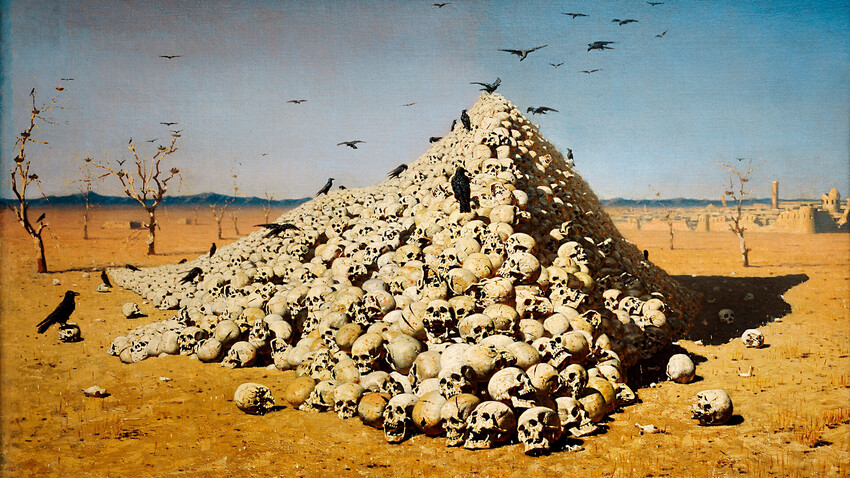
Apotheosis of War, 1871, Vasily Vereshchagin
Tretyakov GalleryMountains of skulls, the triumphant enemy, cutoff heads of soldiers of the Russian army – war and its consequences, documented in the paintings and drawings of the ‘Turkestan Series’ by Vasily Vereshchagin, shocked his contemporaries. And the horrors pouring from his paintings bewilder viewers even today. Where and how did the painter look for the narratives of his paintings?
Vasily Vereshchagin was born in 1842 in a family belonging to one of the Russian noble houses; a military career for their son was the best possible outcome for his parents. Very early on, he discovered his love for drawing, but sending their boy to the Academy of Arts was out of the question. “That would be shameful,” his family said, according to the memories of the painter himself.
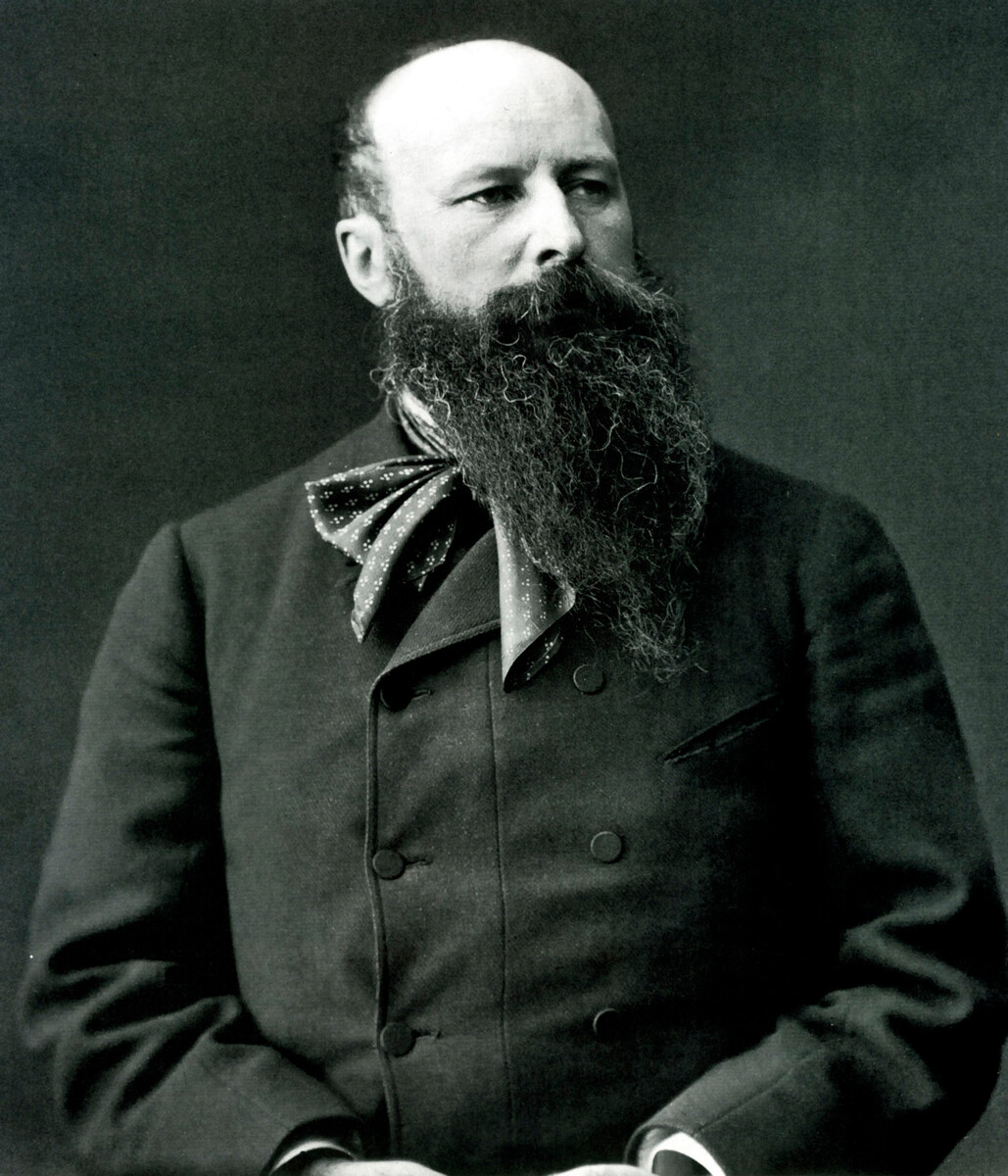
V. Vereshchagin
Public DomainNonetheless, graduating from the Naval Cadet Corps in St. Petersburg, the resolute and headstrong young man went to the Academy of Arts himself. He left it after just three years; he went to Paris to study painting, where famous orientalist Jean-Léon Gérôme became his teacher. After the end of his studies, he was welcomed back home with an offer…
Konstantin Petrovich von Kaufmann, the first Governor-General of Turkestan, invited the then 25-year-old Vereshchagin to join him on his trip to his domain as a “court” painter. As Vereshchagin later wrote, he went there to see the real face and the ins and outs of war. “I imagined… that war – was somewhat of a parade, with music and flying plumes. With banners and the thunder of cannons, with galloping horses, with a lot of pomp and not a lot of danger: of course, there would be a couple of dying men to set the scene…” But what he witnessed in Turkestan changed his perception and his attitude towards war forever.
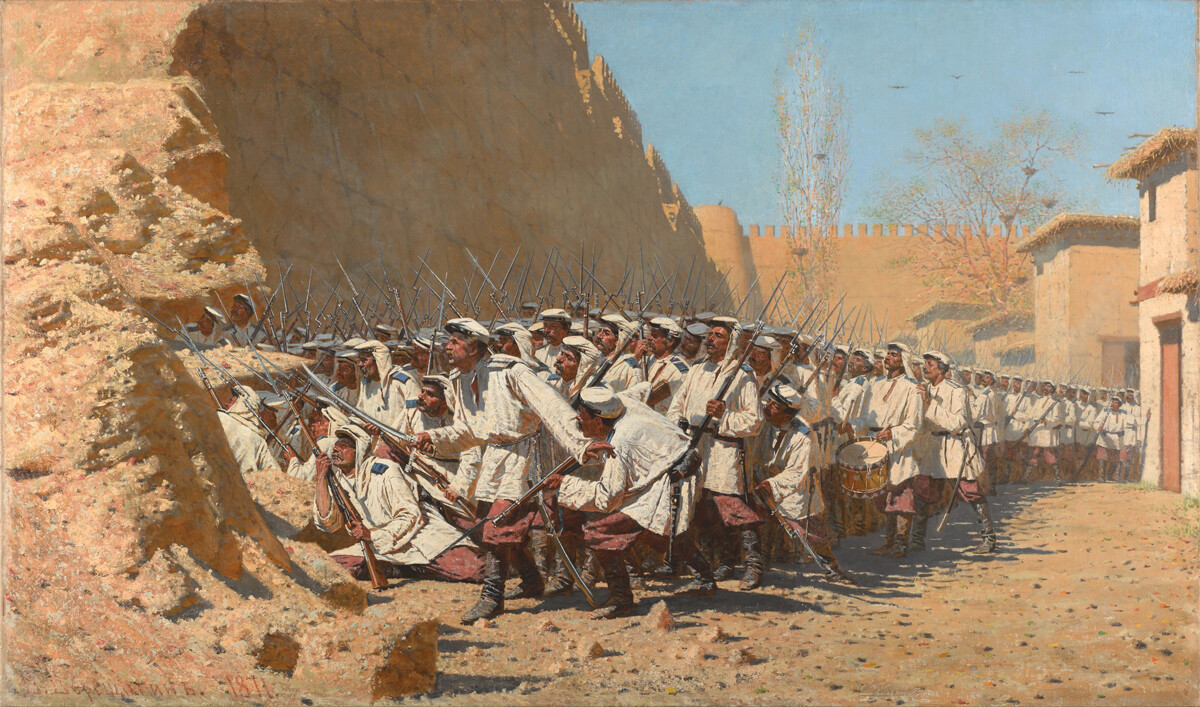
"At the fortress wall. Let them come in". V. V. Vereshchagin
Tretyakov Gallery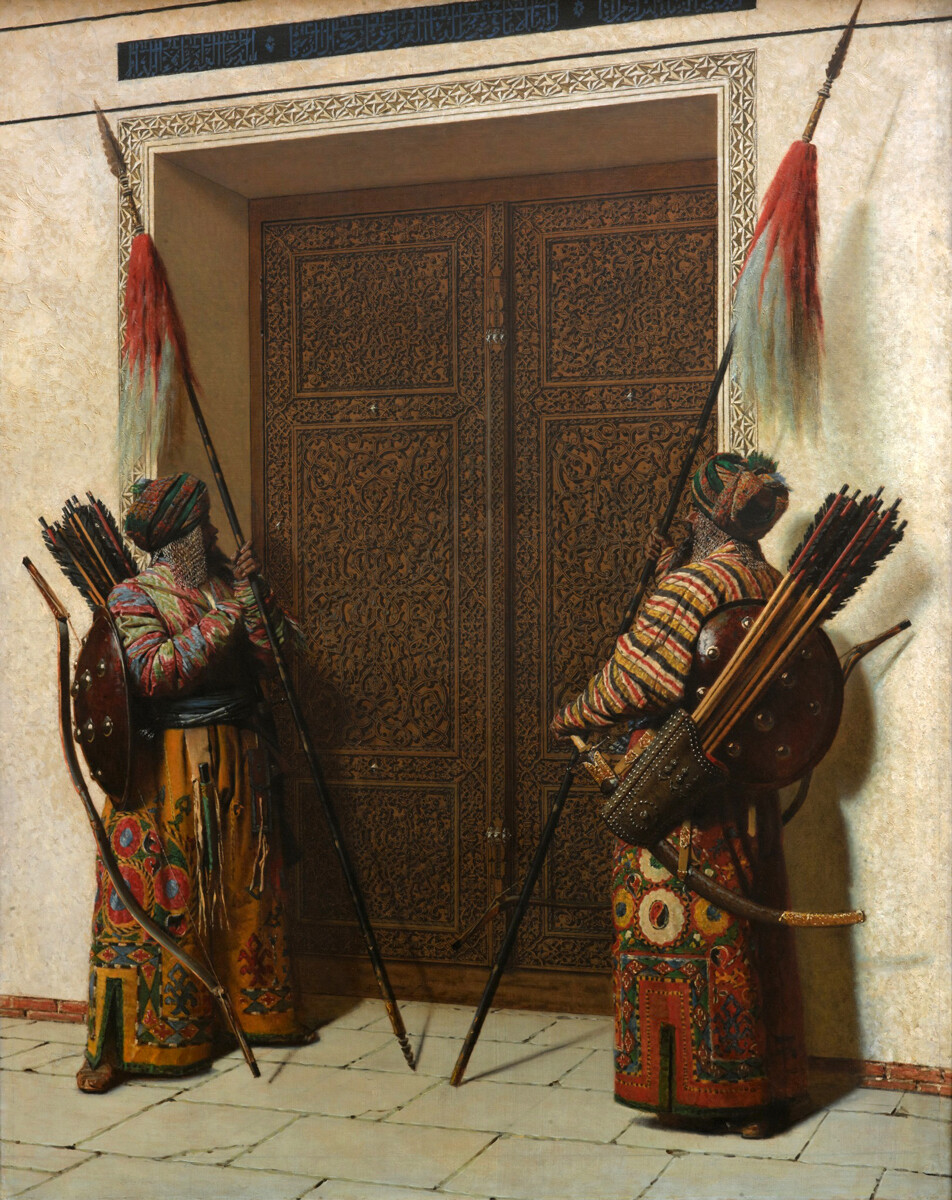
‘Doors of Timur (Tamerlane)’
Tretyakov GalleryHaving arrived in Turkestan, the painter studied the everyday life and customs of the local population; he painted landscapes, portraits and genre scenes. After Samarkand was captured by Russian troops, he went there as a member of a small garrison. As a result of a surprise siege of the fortress by the enemy and a rebellion of the locals, he was forced to swap his brushes for a weapon – that was his first “baptism by fire”. He was awarded an order for the defense of the fortress; later, he participated in other battles during this trip and his subsequent trip to Turkestan. Over the course of three years of military campaigns and his travels in Asia, the painter produced several hundred sketches. All of them became the basis of the grand ‘Turkestan Series’, which Vereshchagin started after he moved to Munich in 1871. He worked on it for more than three years and depicted war without frills. This is how he described his experiences while he worked on it: “I take what I paint too much to heart; I cry out (literally) for the grief of every man wounded and slain.”
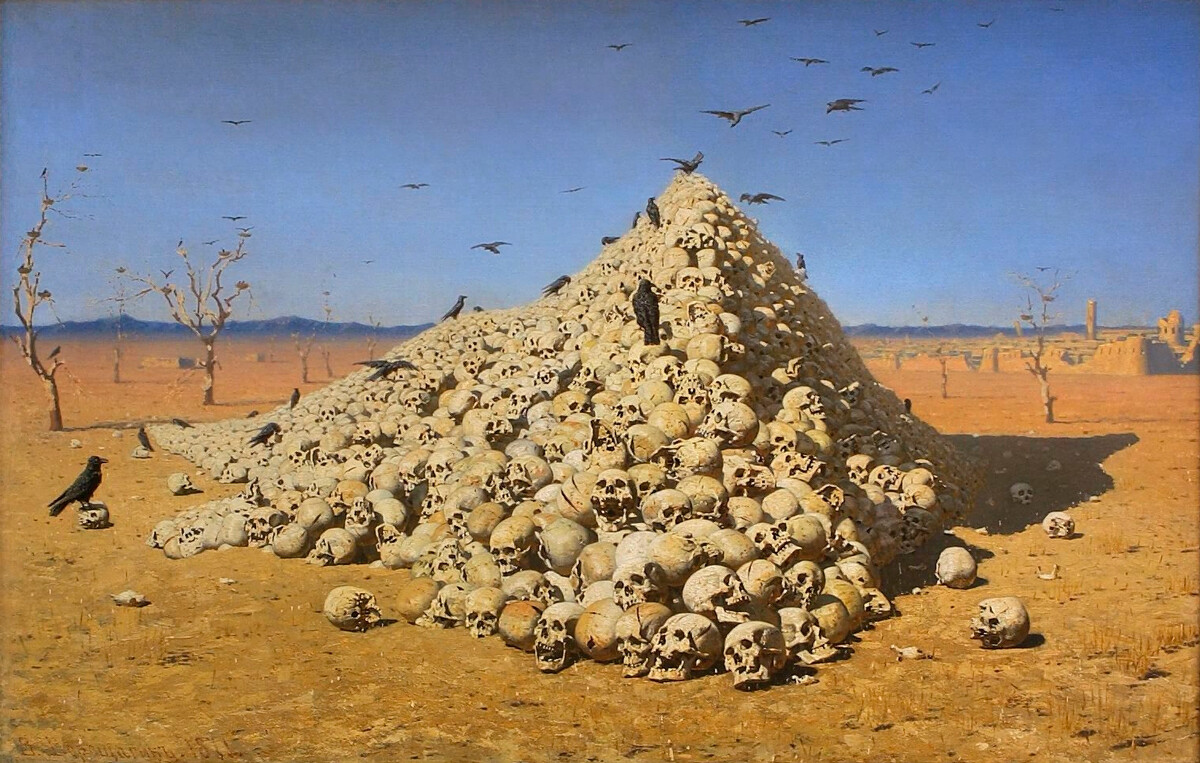
Apotheosis of War, 1871, Vasily Vereshchagin
Tretyakov GalleryIn Europe, they praised the bravery of the master painter, but he was condemned in his own homeland.
The ‘Turkestan Series’ includes 13 paintings, 81 studies and 133 drawings. All together they were exhibited for the first time in 1873 in London. The public and critics alike gave it a warm welcome. The following year, the exhibition moved to St. Petersburg, where it was met with a staggering lack of understanding of the painter’s anti-war messages.
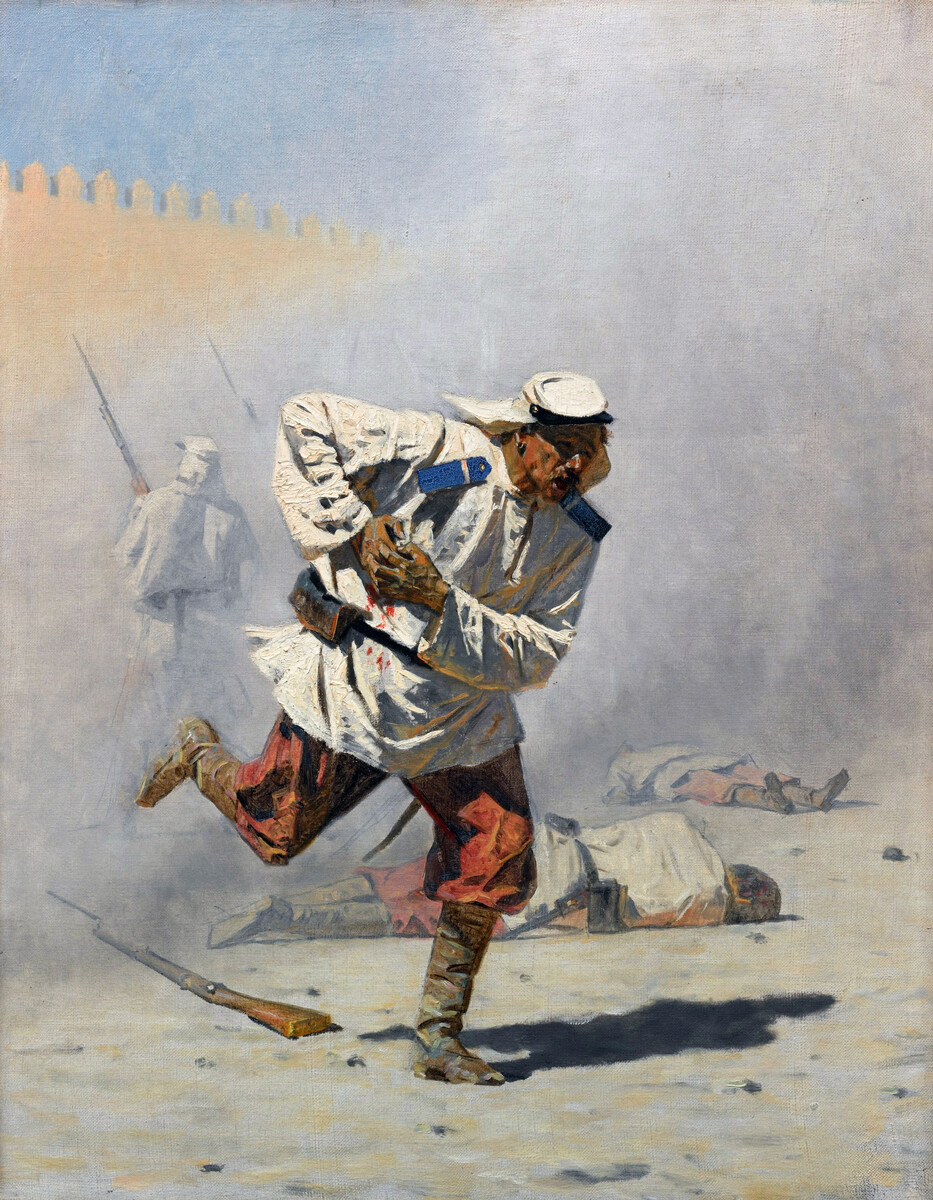
V. V. Vereshchagin, ‘Mortally wounded’
Tretyakov GalleryThe public expected to see a triumphant Russian soldier, who victoriously marched through the steppes of Turkestan; instead, they received a terrible truth with shocking details. For example, the impaled heads of Russian soldiers on stakes in the painting ‘They are triumphant’. Or Vereshchagin’s warning piece ‘The Apotheosis of War’ with a mountain of skulls and the painter’s remark: ‘Dedicated to all great conquerors, past, present and to come.’
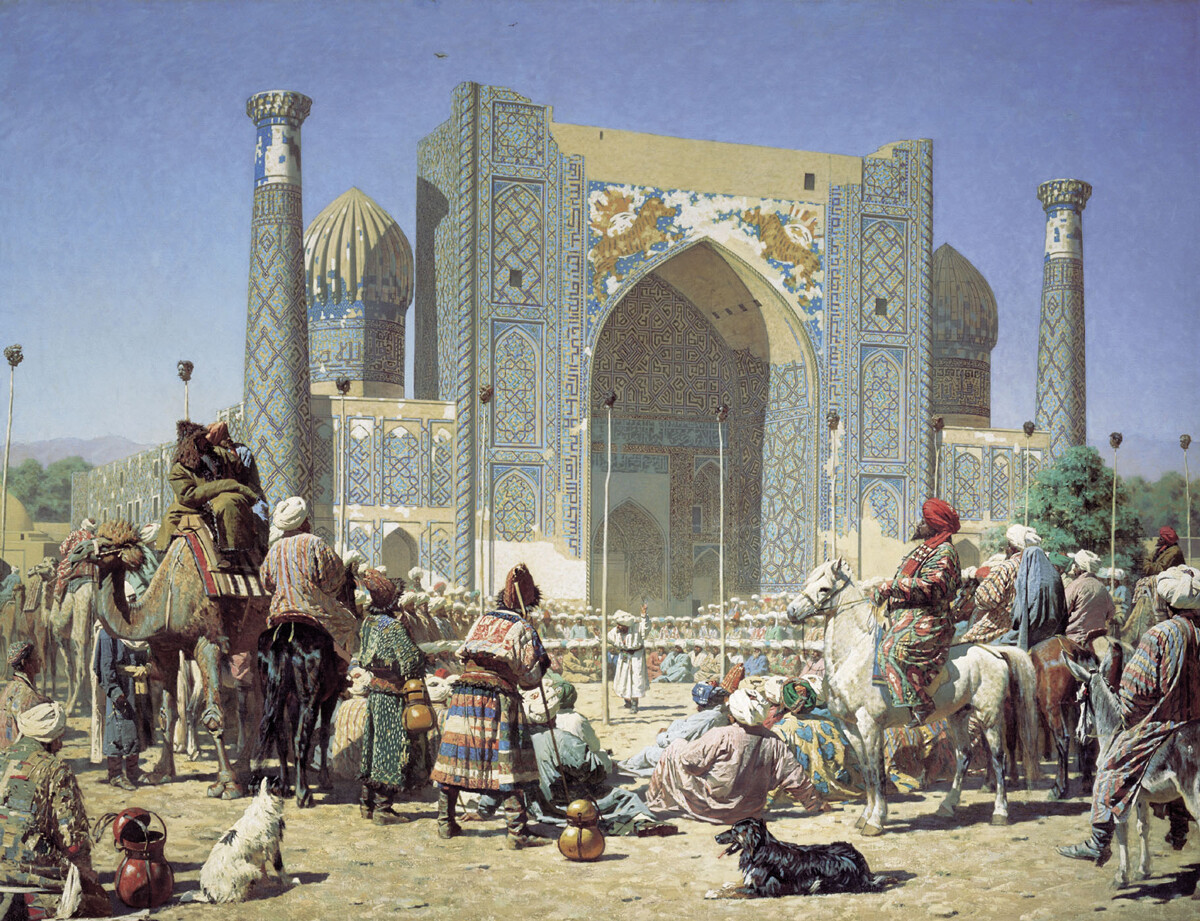
"Triumph", 1872, Vasily Vereshchagin
Tretyakov GalleryA genuine harassment campaign started against Vereshchagin; he was almost called a traitor of his Fatherland, with people blaming him for sympathizing with the enemy. Emperor Alexander II also expressed his displeasure; academic N. L. Tyutryumov even made an accusation that Vereshchagin only painted initial sketches, while the paintings themselves were done by a team of painters in Munich. An insulted Vereshchagin, in protest, cut out and burned three paintings of the series – ‘At the fortress wall. They came in’, ‘They surrounded them – a chase…’ and ‘Forgotten’.

"Surprise attack", 1871, V. V. Vereshchagin
Tretyakov GalleryHowever, the virtuoso also gained a lot of admirers. There were people wishing to purchase separate works of the series in St. Petersburg, but Vereshchagin insisted that it had to be bought as a whole. And he did find such a buyer – it was famous collector Pavel Tretyakov, who exhibited it that same year for Moscow audiences. Thanks to him, today, viewers can witness the paintings of the series at the State Tretyakov Gallery in Moscow.
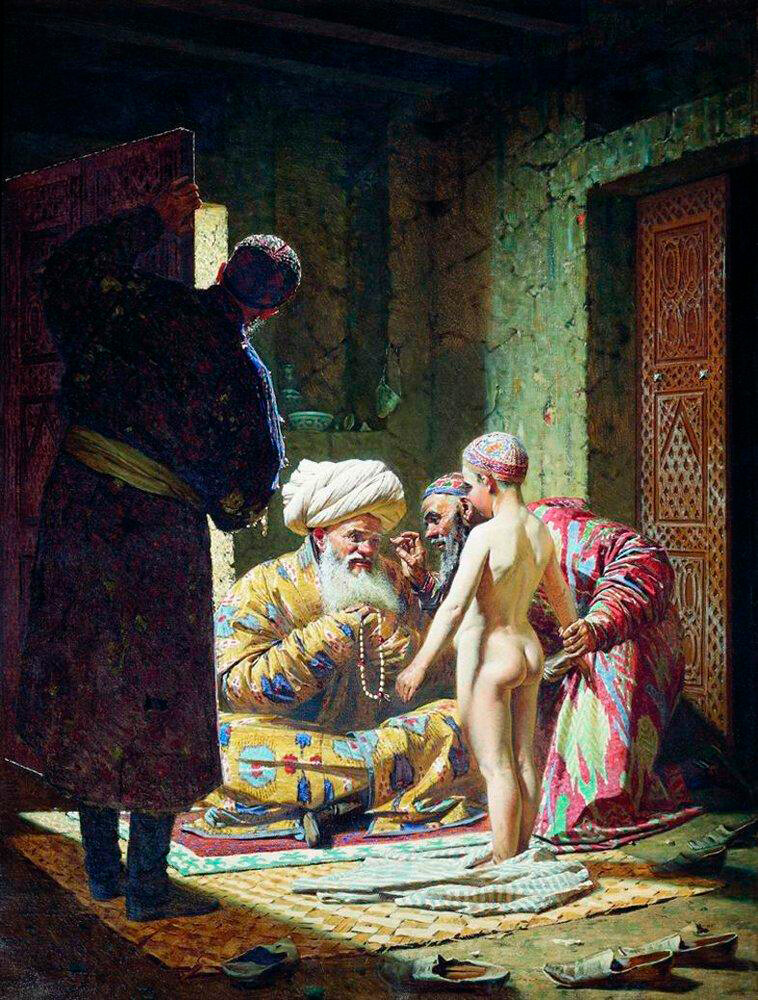
"The Sale of the Child Slave", 1872, Vasily Vereshchagin
Tretyakov GalleryIf using any of Russia Beyond's content, partly or in full, always provide an active hyperlink to the original material.
Subscribe
to our newsletter!
Get the week's best stories straight to your inbox